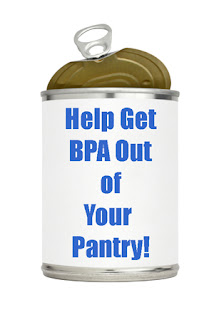I absolutely love my job and love Grow Appalachia. Grow Appalachia is a wonderful program that helps hundreds of families throughout Central Appalachia gain the supplies, knowledge, and physical assistance necessary to grow abundant gardens full of nutrient dense, fresh food. While saving families money on grocery bills and allowing families to increase their intake of fresh vegetables is impressive in itself, Grow Appalachia sites constantly provide anecdotal evidence that the program also brings neighbors together, strengthens communities, and improves mental health. If that isn’t enough, the program may also be decreasing families’ exposure to toxic chemicals found in food packaging! Wow!
 |
| Deb Callahan’s Chow Chow |
During our Tuesday Grow Appalachia meeting we welcomed Melinda Alcorn, Community Educator for the Safe Foods Project to present on the hidden dangers of packaged food. Melinda guided us through a discussion on BPA (Bisphenol A) usage by food companies.
What is BPA? BPA was originally manufactured as a synthetic estrogen. It is currently used to harden plastic and as a protective barrier against metal corrosion and bacteria in canned foods.
What’s the big deal? Studies have found that BPA has leached into the food in 92% of cans found in the grocery store. BPA is an endocrine disruptor that affects how hormones carry messages throughout our bodies. Even low levels of exposure have been linked to breast and prostate cancer, infertility, diabetes, thyroid disorders, early puberty, and even attention deficits and behavioral problems. BPA is also an obesegen, which changes precursor cells into fat cells and changes metabolism rates so we accumulate more calories instead of burning them.
Where is BPA found? BPA can be found in many products, such as DVDs, receipts, pop cans, re-usable water bottles, baby bottles, and Sippy cups. BPA is predominately found in the plastic linings of cans used to store food. Fortunately, many companies are phasing out BPA use in re-usable water bottles, baby bottles, and Sippy cups (look for the label “BPA free”).
What can we do to avoid BPA?
1. Eat fresh food! This is where Grow Appalachia shines again! By growing our own food and preserving it ourselves for the winter we are lowering our exposure drastically.
2. Purchase dried beans rather than canned and frozen produce rather than canned.
3. Pay attention to the type of plastic you are buying. Check on the bottom of containers for the recycle symbol. Inside the symbol there should be a number. Plastics numbered 1, 2, 4, and 5 are better. Avoid #3 (PVC), #6 (polystyrene), and #7 or “PC” (Polycarbonate). #3 and #6 do not contain BPA, but are still more toxic than the other numbers. Click here to learn more about what recycling codes tell us.





Leave A Comment